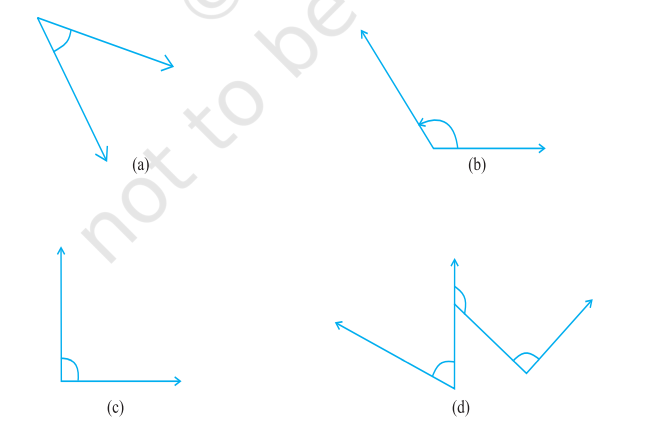Draw an obtuse angle. Bisect it. Measure each of the angles so obtained.
Step-by-Step Solution:
Step 1: Draw an Obtuse Angle
1. Start by taking a ruler and drawing a straight line segment, which we will call line segment AB.
2. Using a protractor, place the center point of the protractor at point A (one end of the line segment).
3. Since we need to draw an obtuse angle (greater than 90 degrees), measure an angle of 120 degrees from line segment AB.
4. Mark this point as point C.
5. Draw a line from point A to point C to complete the obtuse angle ABC.
Step 2: Bisect the Obtuse Angle
1. To bisect angle ABC, take a compass and place the pointer on point B (the vertex of the angle).
2. Draw an arc that intersects both rays of the angle (line segments AB and BC). Let these intersection points be D and E.
3. Without changing the compass width, place the compass pointer on point D and draw an arc inside the angle.
4. Now, place the compass pointer on point E and draw another arc that intersects the first arc. Let this intersection point be F.
5. Draw a straight line from point B through point F. This line is the bisector of angle ABC.
Step 3: Measure the Angles Obtained
1. Use the protractor to measure angle ABF (the angle on one side of the bisector).
2. Then measure angle CBF (the angle on the other side of the bisector).
3. Both angles should measure 60 degrees, confirming that the angle has been bisected correctly.
1. Start by taking a ruler and drawing a straight line segment, which we will call line segment AB.
2. Using a protractor, place the center point of the protractor at point A (one end of the line segment).
3. Since we need to draw an obtuse angle (greater than 90 degrees), measure an angle of 120 degrees from line segment AB.
4. Mark this point as point C.
5. Draw a line from point A to point C to complete the obtuse angle ABC.
1. To bisect angle ABC, take a compass and place the pointer on point B (the vertex of the angle).
2. Draw an arc that intersects both rays of the angle (line segments AB and BC). Let these intersection points be D and E.
3. Without changing the compass width, place the compass pointer on point D and draw an arc inside the angle.
4. Now, place the compass pointer on point E and draw another arc that intersects the first arc. Let this intersection point be F.
5. Draw a straight line from point B through point F. This line is the bisector of angle ABC.
1. Use the protractor to measure angle ABF (the angle on one side of the bisector).
2. Then measure angle CBF (the angle on the other side of the bisector).
3. Both angles should measure 60 degrees, confirming that the angle has been bisected correctly.
Topper's Solved these Questions
Similar Questions
Knowledge Check
- Question 1 - Select One
Two angles of a quadrilateral measure 85∘and75∘ respectively. The other two angles are equal. Find the measure of each of these equal angles.
A110∘B102∘C100∘D120∘ - Question 2 - Select One
The measures of two angles of a quadrilateral are 115∘and45∘, and the other two angles are equal. Find the measure of each of the equal angles.
A120∘B105∘C100∘D130∘ - Question 3 - Select One
Three angles of a quadrilateral are equal and the measure of the fourth angle is 120∘. Find the measure of each of the equal angles.
A80∘B65∘C70∘D90∘
Draw an angle of 110∘ with the help of a protractor and bisect it. Measure each of these angles. Justify your answer.
View SolutionWrite the sum of the angles of an obtuse triangle.
View SolutionGive two measures of (i) acute angle (ii) obtuse angle.
View Solution.write down the measures:(a) some acute angles (b) some obtuse angles.4. Measure the angles given below using the Protractor and write down the measure
 View Solution
View SolutionConsider the following statement.
"If a triangle is equiangular, then it is an obtuse angled triangle."
This is equivalent to
I. a triangle is equiangular implies that it is an obtuse angled triangle.
II. For a triangle to be obtuse angled triangle it is sufficient that it is equiangular.
Choose the correct option.View Solution

